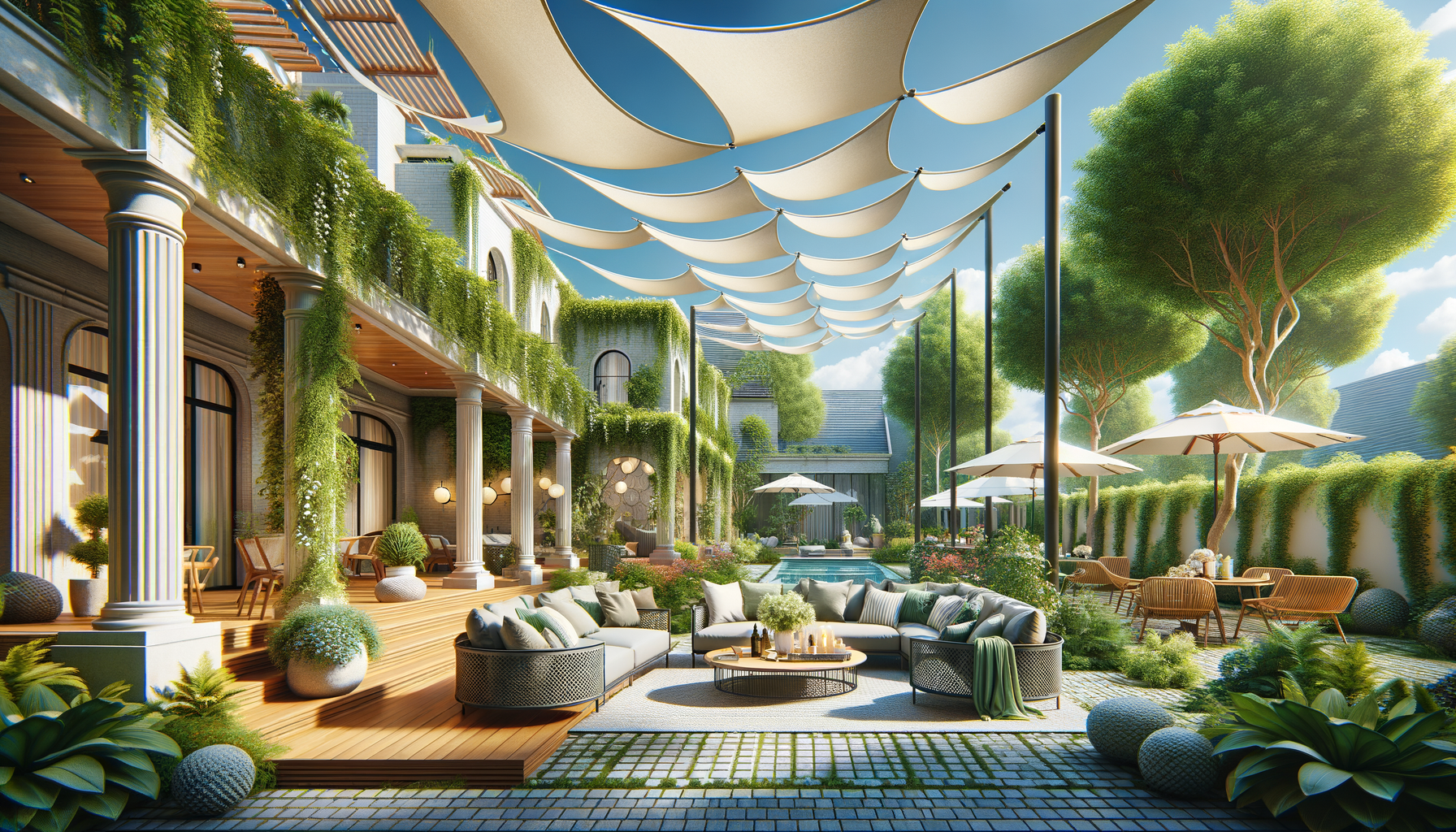Transforming Outdoor Living with Canopies & Overhangs
Canopies and overhangs can effectively revamp any outdoor space, infusing it with style and functionality.

The Aesthetic Appeal of Canopies and Overhangs
Canopies and overhangs are not just functional additions to outdoor spaces; they are also significant aesthetic enhancements. These structures can transform a plain exterior into a welcoming and stylish area. By adding a canopy or overhang, homeowners can create a visual focal point that draws attention and adds character to their property. The variety of materials and designs available allows for customization to match any architectural style, from modern minimalism to rustic charm.
For instance, a sleek, metal-framed canopy with a glass roof can complement a contemporary home, while a wooden overhang with intricate carvings might suit a traditional setting. The choice of materials and design can also affect the perception of space; lighter colors and transparent materials can make a small area feel larger and more open.
Moreover, the aesthetic appeal of canopies and overhangs extends to their ability to incorporate lighting. Strategically placed lights can highlight architectural features and create an inviting ambiance during the evening. Whether it’s a string of fairy lights or integrated LED strips, lighting can enhance the visual impact of these structures.
- Customizable to match architectural styles
- Enhances the perception of space
- Opportunity for integrated lighting
Functional Benefits and Practical Uses
Beyond aesthetics, canopies and overhangs serve several practical purposes that enhance outdoor living. One of the primary functions is providing shelter from the elements. Whether it’s shielding from the harsh sun or offering protection during a rain shower, these structures make outdoor spaces more usable year-round. This functionality is particularly valuable in regions with unpredictable weather patterns.
Additionally, canopies and overhangs can help regulate the temperature of adjacent indoor spaces. By blocking direct sunlight, they reduce heat gain, which can lead to lower cooling costs during summer months. This passive cooling effect is a sustainable way to improve energy efficiency in homes.
In commercial settings, such as cafes or restaurants, canopies and overhangs extend usable space, allowing for more seating and enhancing customer experience. They create a comfortable environment for patrons to enjoy outdoor dining, regardless of weather conditions.
- Provides shelter from weather
- Enhances energy efficiency
- Extends usable outdoor space
Material Choices and Environmental Impact
The choice of materials for canopies and overhangs significantly influences their environmental impact and durability. Common materials include wood, metal, glass, and fabric, each offering distinct advantages and considerations. Wood, for example, provides a natural and warm aesthetic but requires regular maintenance to prevent weathering. Metal is durable and low-maintenance but may not offer the same warmth as wood.
Glass canopies allow natural light to filter through while providing protection, making them an excellent choice for those who want to maintain a bright outdoor space. However, they can be costly and require regular cleaning to maintain clarity. Fabric options, such as awnings, are versatile and can be retracted when not needed, but they may need replacement over time due to exposure to the elements.
When considering environmental impact, it’s important to choose sustainable materials and finishes. Reclaimed wood or recycled metal are eco-friendly options that reduce the carbon footprint. Additionally, selecting materials with a long lifespan minimizes waste and the need for frequent replacements.
- Wood: natural but requires maintenance
- Metal: durable and low-maintenance
- Glass: brightens space but costly
- Fabric: versatile but less durable
Design Considerations for Optimal Performance
Designing canopies and overhangs requires careful planning to ensure they meet aesthetic and functional goals. The first consideration is the size and placement, which should be proportional to the area they cover. An oversized canopy can overwhelm a small space, while a too-small structure may not provide adequate shelter.
Orientation is another critical factor. For optimal sun protection, canopies and overhangs should be positioned to block the strongest rays during peak hours. This typically means a south or west orientation in most regions. Additionally, the angle of the overhang can affect its performance; a steeper angle may offer better rain runoff but less sun protection.
Incorporating adjustable features, such as retractable awnings or adjustable louvered roofs, can enhance the versatility of these structures. These features allow users to control the amount of sunlight and ventilation, adapting the space to changing weather conditions.
- Size and placement considerations
- Orientation for sun protection
- Adjustable features for versatility
Innovative Trends in Canopy and Overhang Design
The world of canopies and overhangs is evolving with innovative trends that blend technology and design. One such trend is the integration of smart technology, which allows homeowners to control their outdoor structures via smartphone apps. This technology enables users to adjust lighting, retract awnings, or even control temperature settings with ease.
Another trend is the use of sustainable materials and designs that prioritize environmental responsibility. Green roofs, for example, are becoming popular in urban areas, where space is limited. These roofs not only provide shelter but also contribute to biodiversity and reduce urban heat.
Biophilic design, which emphasizes the connection between humans and nature, is also influencing canopy and overhang design. Incorporating natural elements, such as plants or water features, into these structures can enhance well-being and create a tranquil outdoor retreat.
- Smart technology integration
- Sustainable and green designs
- Biophilic design elements